If you have been following along, you will recognize the crescendo of this Shead story has taken over my posts and summer research. It is hard to think of anything else I could add to what I’ve discovered so far save just adding to his already herculean numbers of completed pieces of art. Following the magazine covers that were part of his enormous portfolio and utilizing the interlibrary loan services at my library I secured a few copies of the Specialty Salesman Magazine.
They aren’t readily available and is one of those magazines whose volume numbers roll over in the middle of the calendar year. Luckily I was able to get a copy of November 1925 as it explained the change in editorial and layout (in great detail), and the new direction that the magazine was headed. This is fortunate because one of the pages featured a set of portraits of the magazine staff including their titles. Not only was Ralph Shead a contributing illustrator to the magazine he was the magazine’s art director. This explains the several covers that were part of the portfolio as well as the few pieces of art that weren’t his.
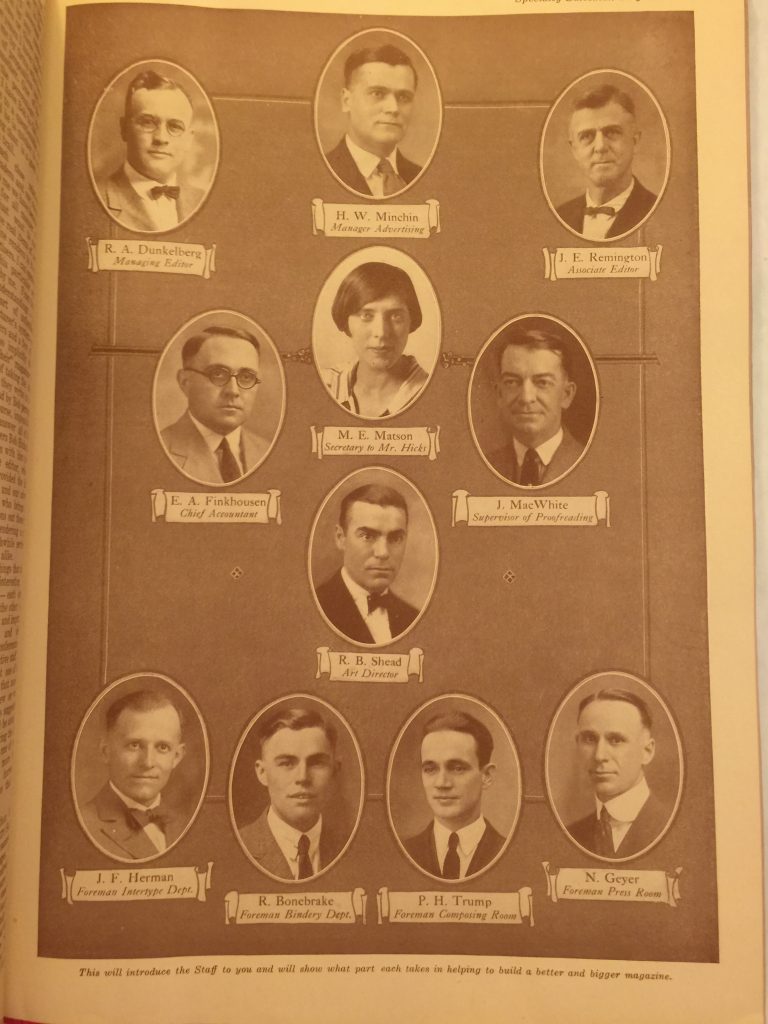
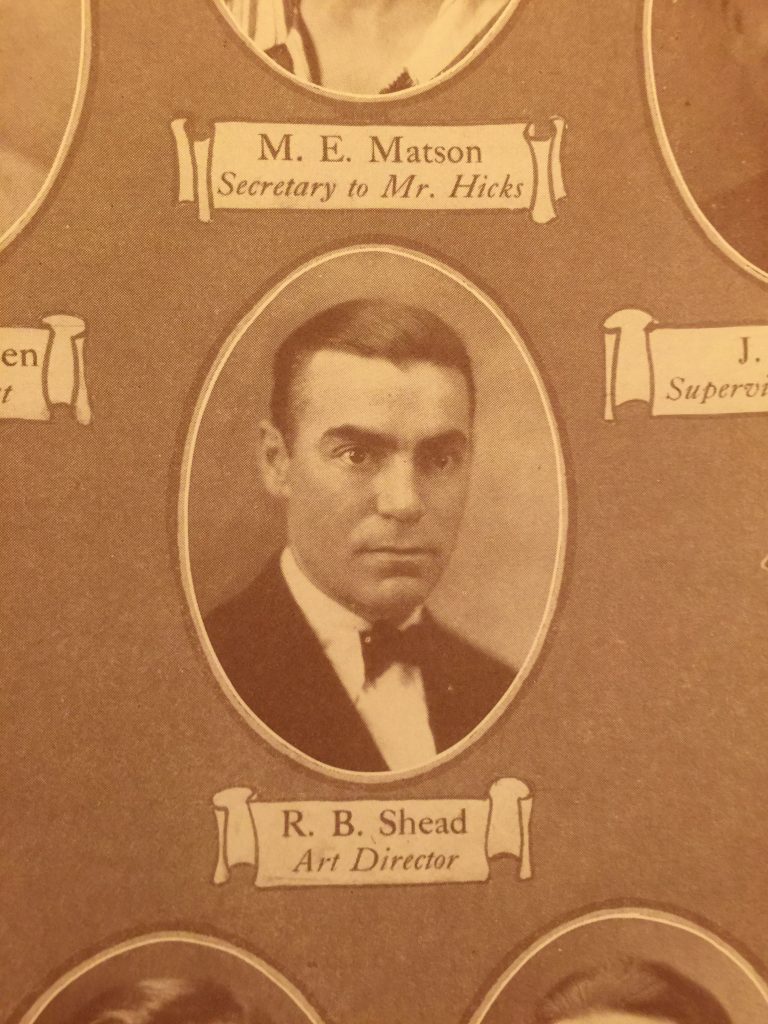
So far the earliest I have seen is the November 1925 edition, but one of the portfolio covers shows the change from 1924 to 1925. Perhaps he was working for the museum even earlier. I am still trying to track down as many copies of the magazines as I can to at least figure out when he started publishing illustrations there. This isn’t a particularly easy task as the magazines are large format (about 12×14 inches) and average 150 pages each. Some of the earliest ones I have seen swell to nearly 250. This means they take up a lot of space on library shelves and are likely not to be requested much. This is one of those instances where the physical copies of the magazines are essential to determining who produced the art. As great as microfilm is for text it is just as bad when it comes to images. We’ve preserved hard black and white letters for 500 years, but there was no apparent reason to care about that the images were. Simple pictures and visual aids are of no importance. (This is where we need a dedicated sarcasm font). For instance, in microfilm you would never be able to make out the works on the wall or on Shead’s easel in this image. Working with the physical copy you can clearly see one of the originals from the previous post hanging on the wall.
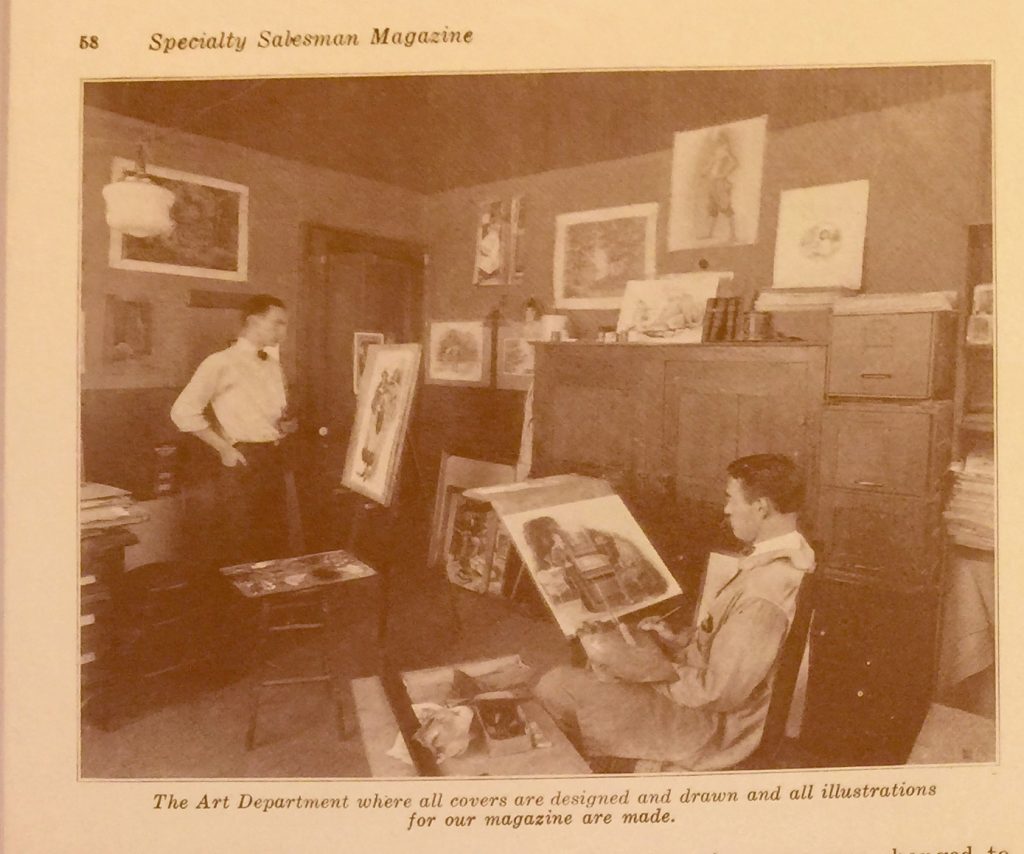
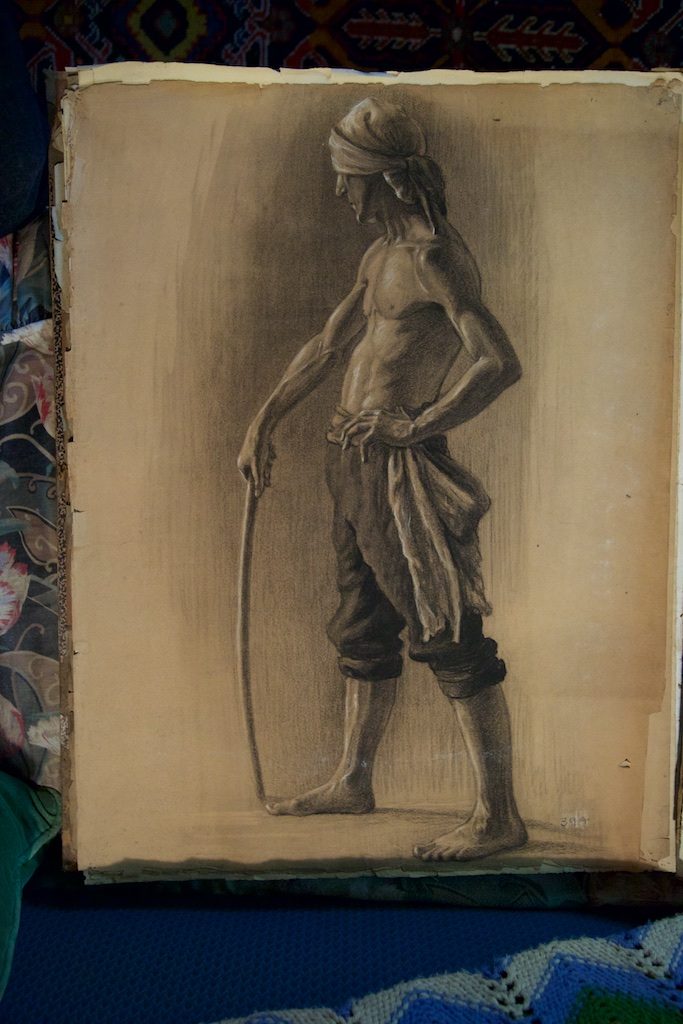 I am working on getting a clearer scan of that page to see if I can match any more of the extant pieces with the Art Department’s studio. I am hoping against hope that the one he is working on in this photo is one of the originals, but I fear I may have already used up my allotment of luck for this project.
I am working on getting a clearer scan of that page to see if I can match any more of the extant pieces with the Art Department’s studio. I am hoping against hope that the one he is working on in this photo is one of the originals, but I fear I may have already used up my allotment of luck for this project.
Before I show the few matching pieces that I have found I want to share a little about the magazine itself. As its title suggests it is a magazine for men and women who sell. Sell what, exactly? And to whom? The mid twenties saw a rise in the traveling salesman and this magazine was a trade magazine of sorts to those enterprising enough to go door to door. Even if you’ve never been visited by a brush or vacuum cleaner salesman, you know there kind. This is exactly what Daffy Duck was doing representing the various head offices in Walla Walla, Washington. It wasn’t just a television trope.
Among the short stories illustrated by Shead and a handful of others there were scores of advertising pages providing dealer direct stock of men and women’s clothing, fountain pens, pocket watches, and even fire extinguishers. It is basically a magazine full of all the things that are relegated to the backs of most magazines today.
With nearly 9 more years to round out the 20s I do not know when or if I will be able to complete the decade an further to see when Shead’s final piece appeared, but there is more than enough here to attest to the profound productivity during his time in Indiana. In the 14 issues that I have catalogued Shead produced 84 illustrations and the all their covers.
For every one of the originals that are still in the portfolio there are several that exist as illustrations only. Some are part of the same stories, others are dispersed throughout countless other stories.
Shead’s illustration surrounding this poem “The Gallant Salesman” also shows that his animal scenes were just as good as any of those featuring people. It would be almost a decade before his subjects took him back to Norman to the campus museum and into prehistory.
As a final though on Shead’s work and to tie it all back around to his work at the Stovall museum and where I first encountered him, there is a marvelous collection of images that are all part of the same project. Throughout this project besides breaking through some of the obscurity of the man and his work, I have been able to see his watercolor study, the plaster Marquette (which it turns out are not his), and a beautiful black and white photo of the finished diorama as it ran in The Oklahoman in 1952. 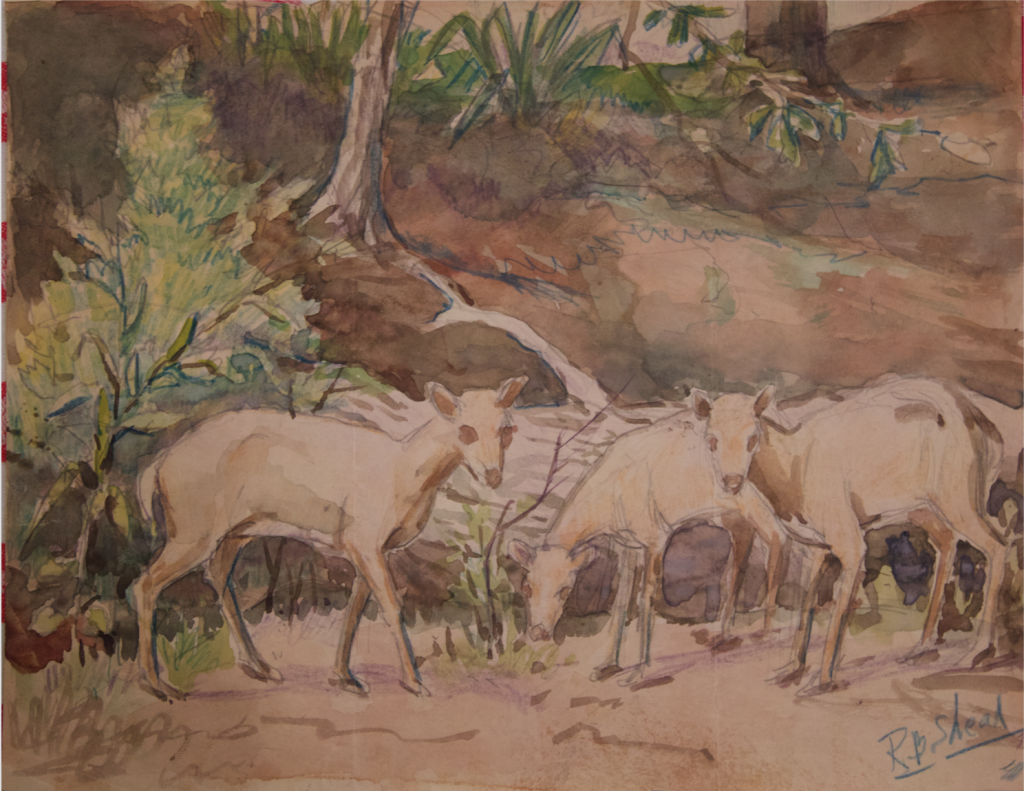
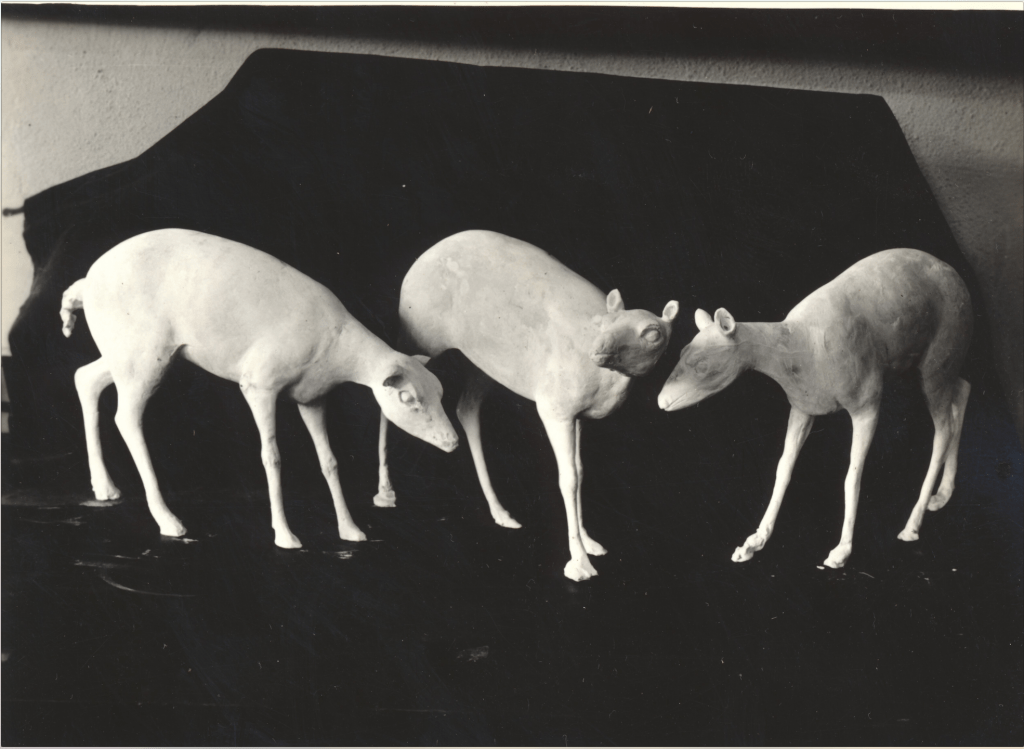
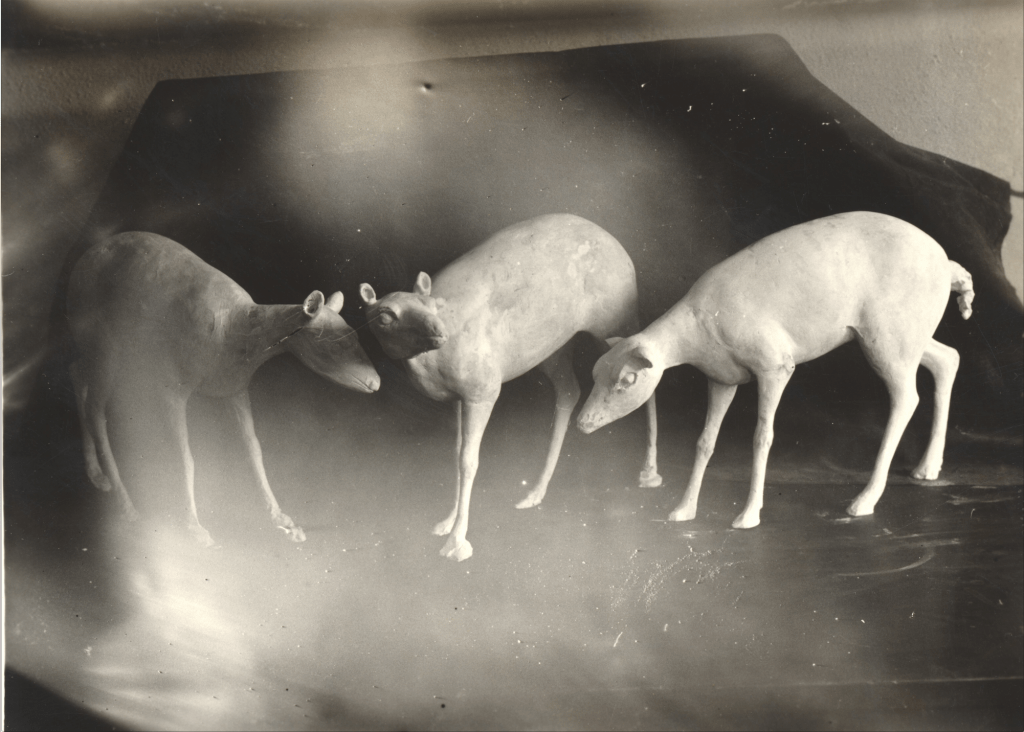
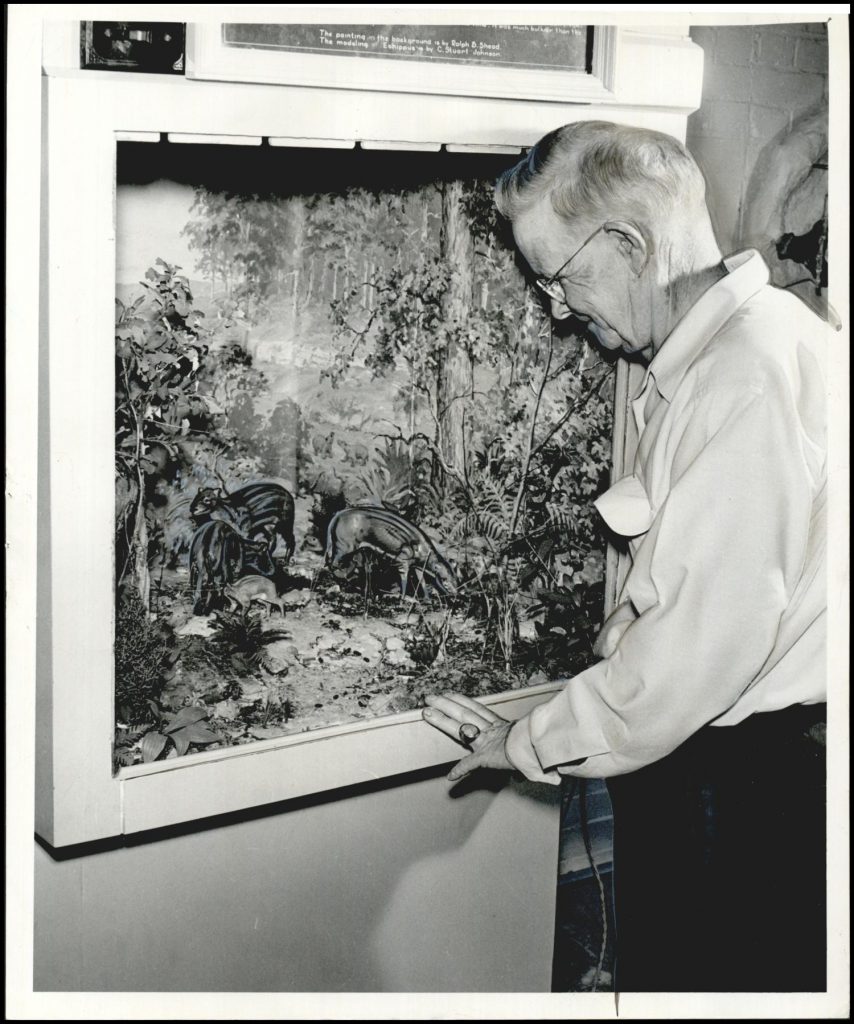

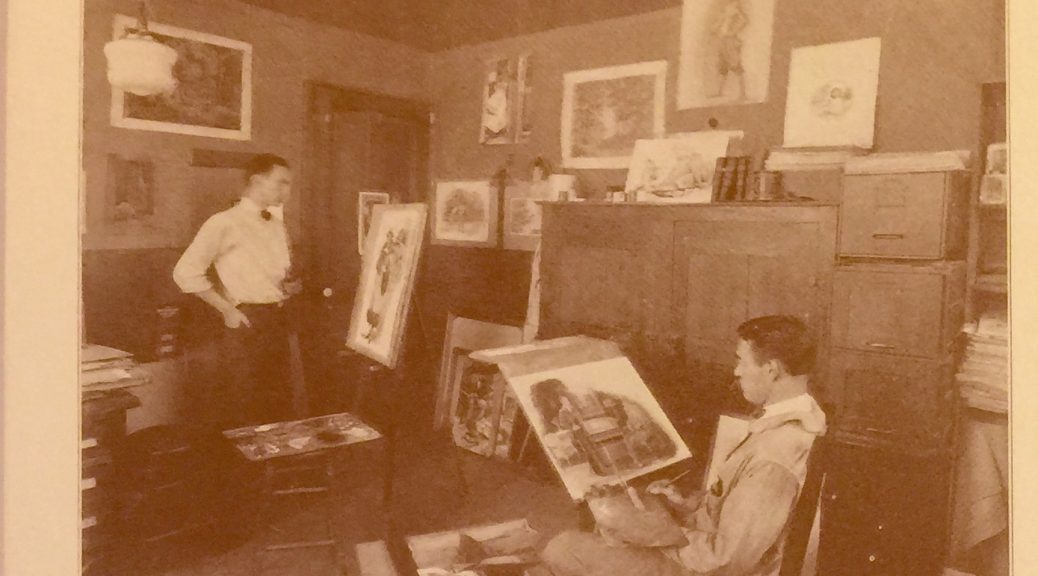
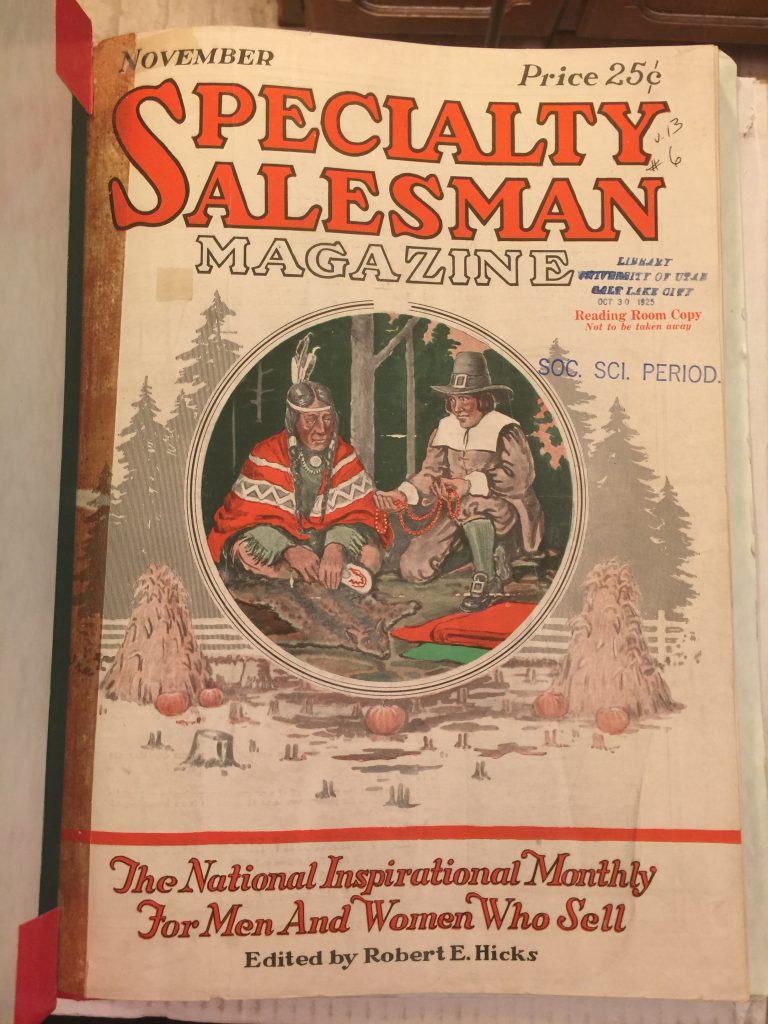
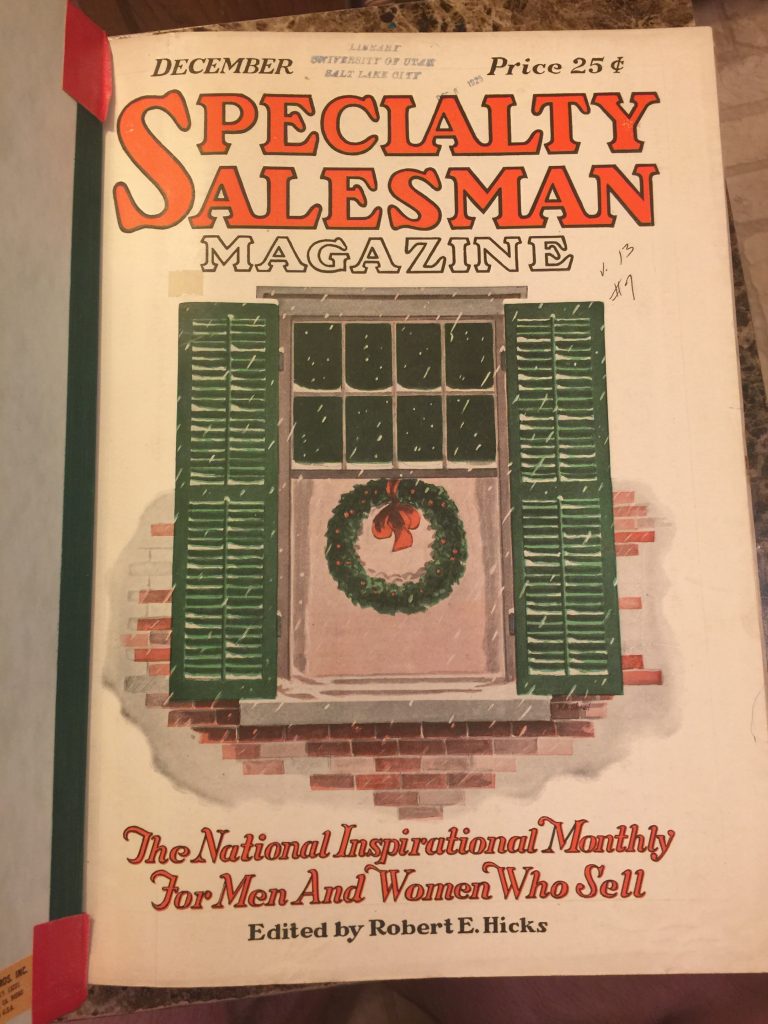
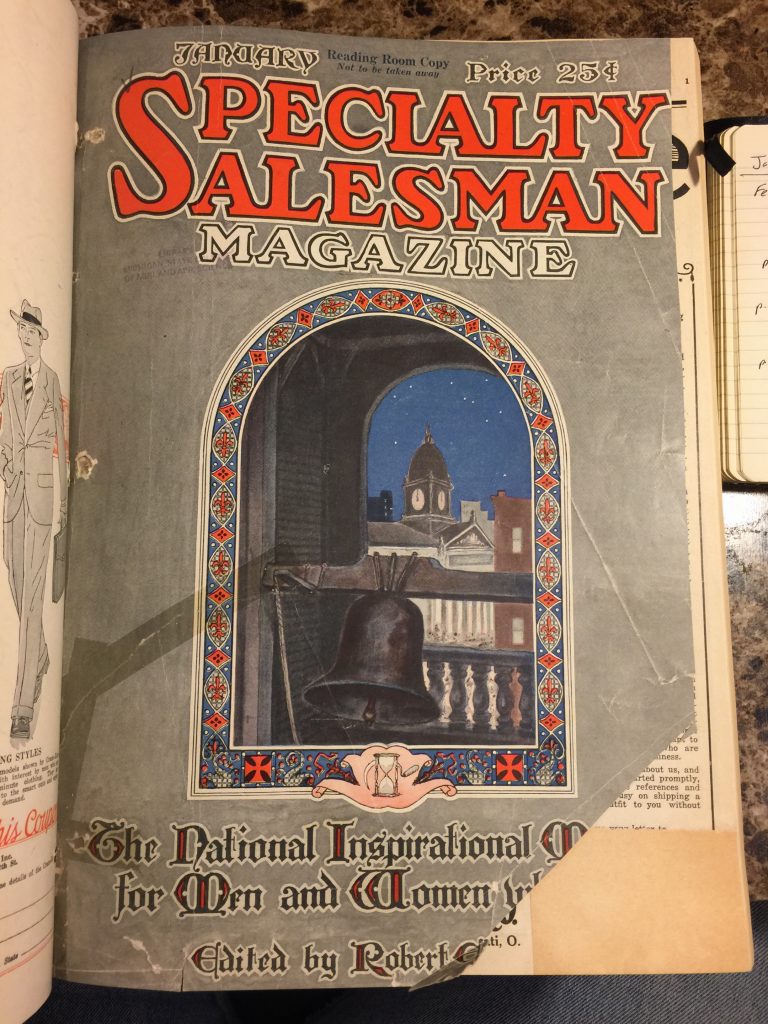
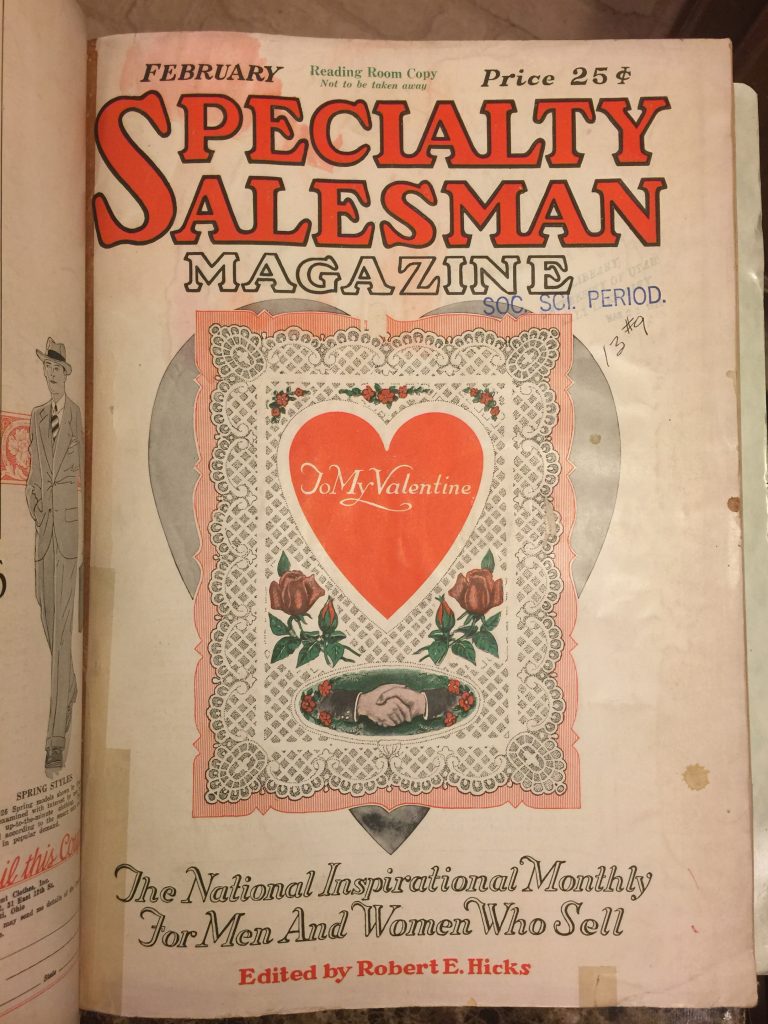
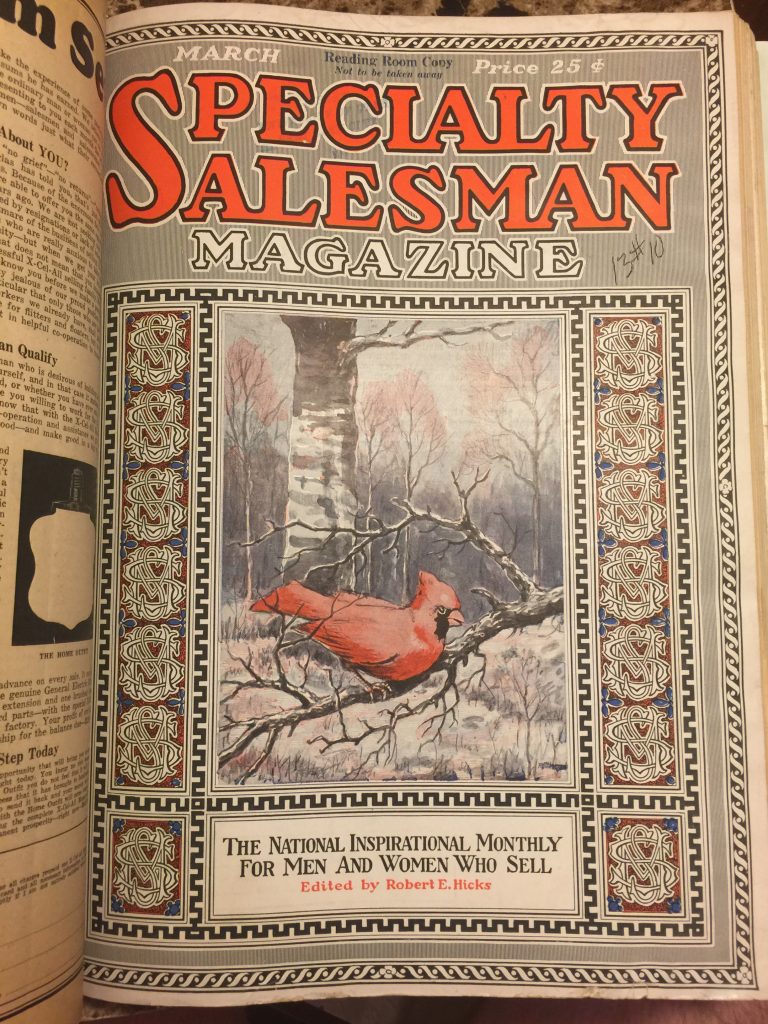
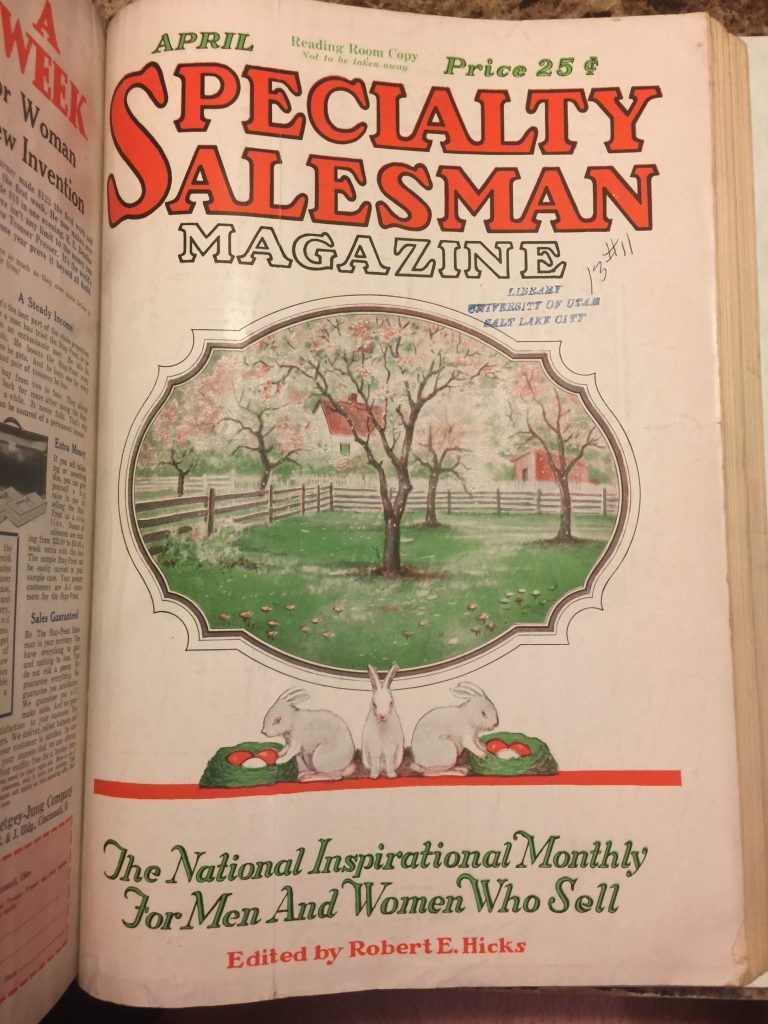

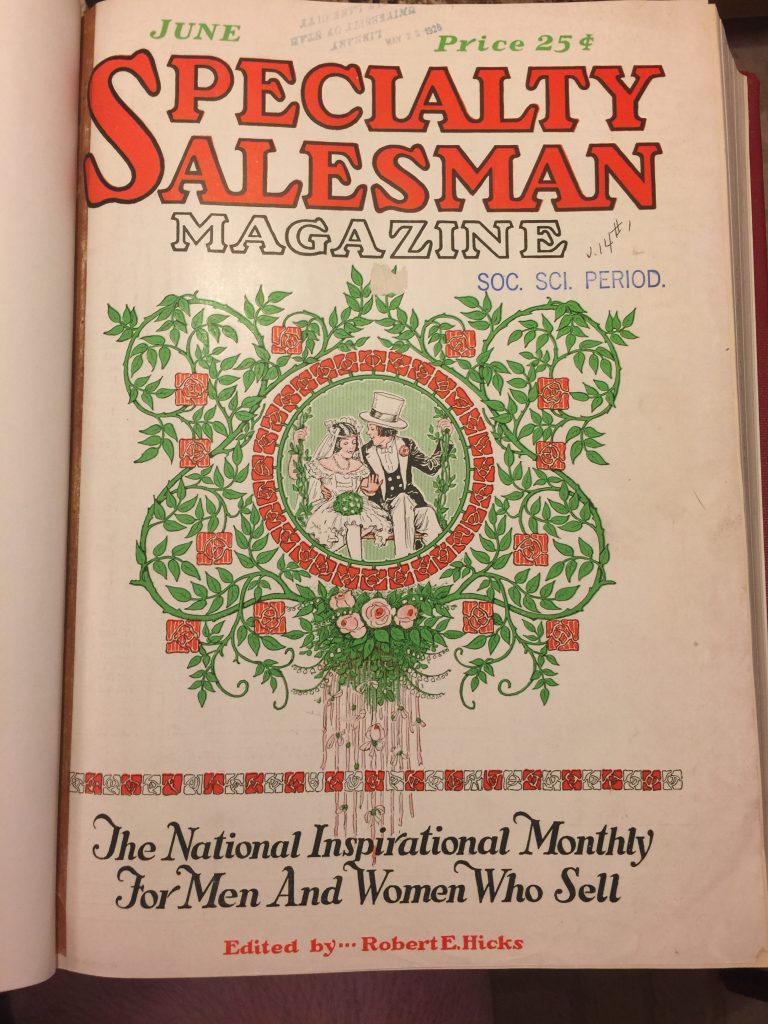
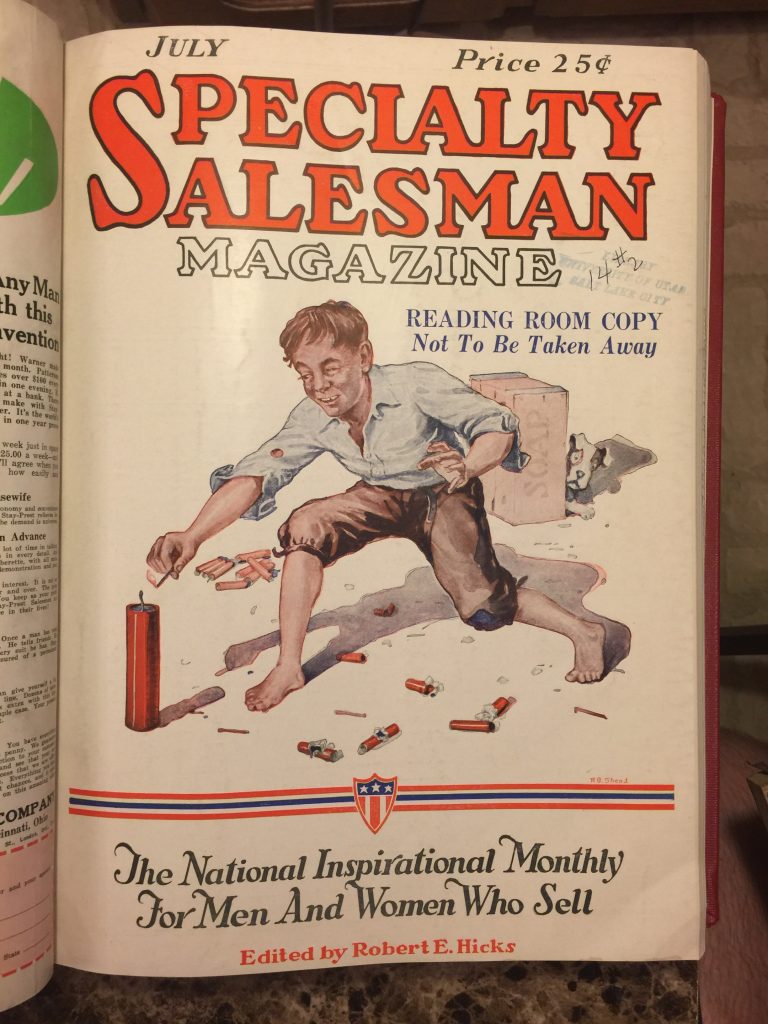
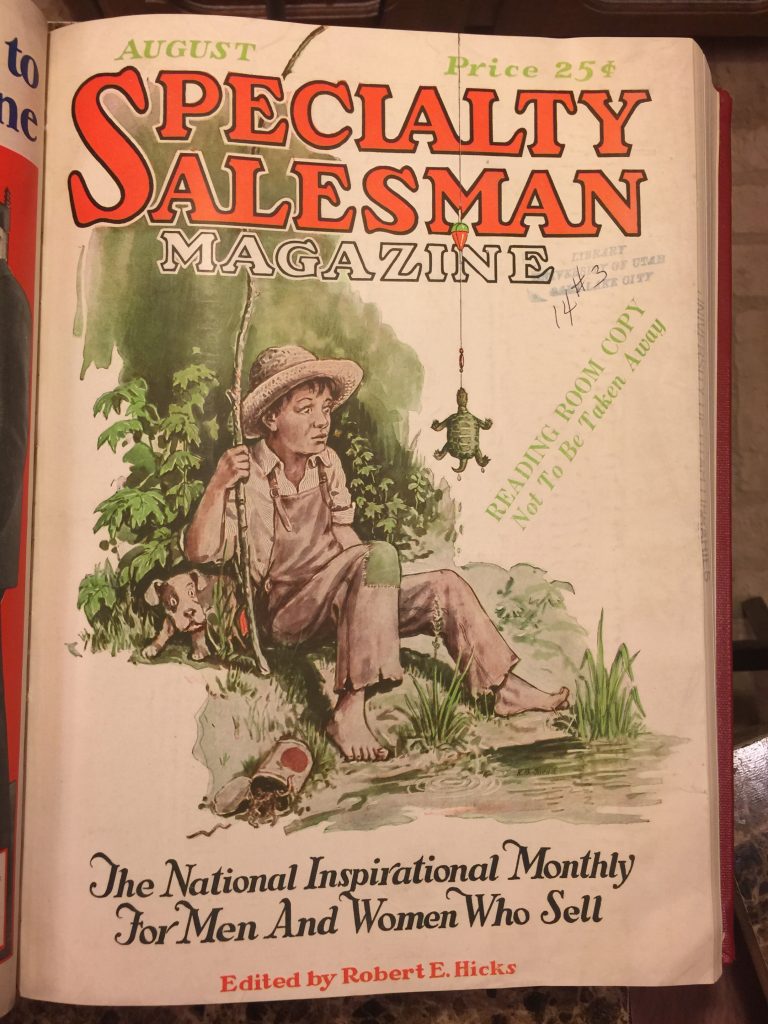

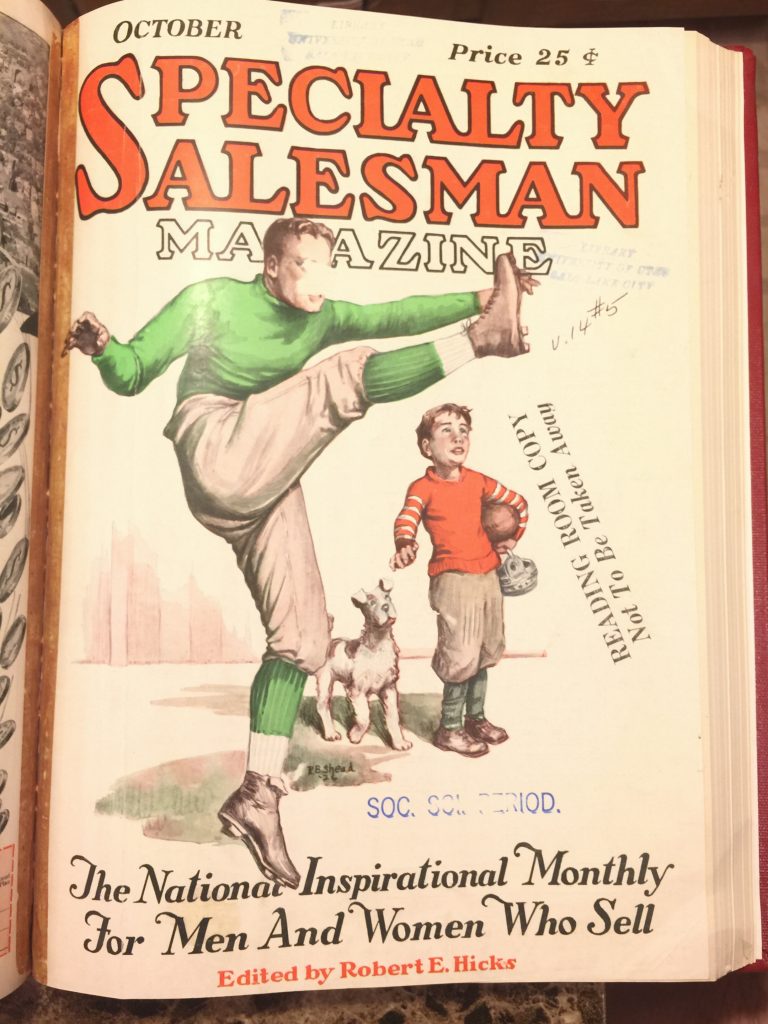
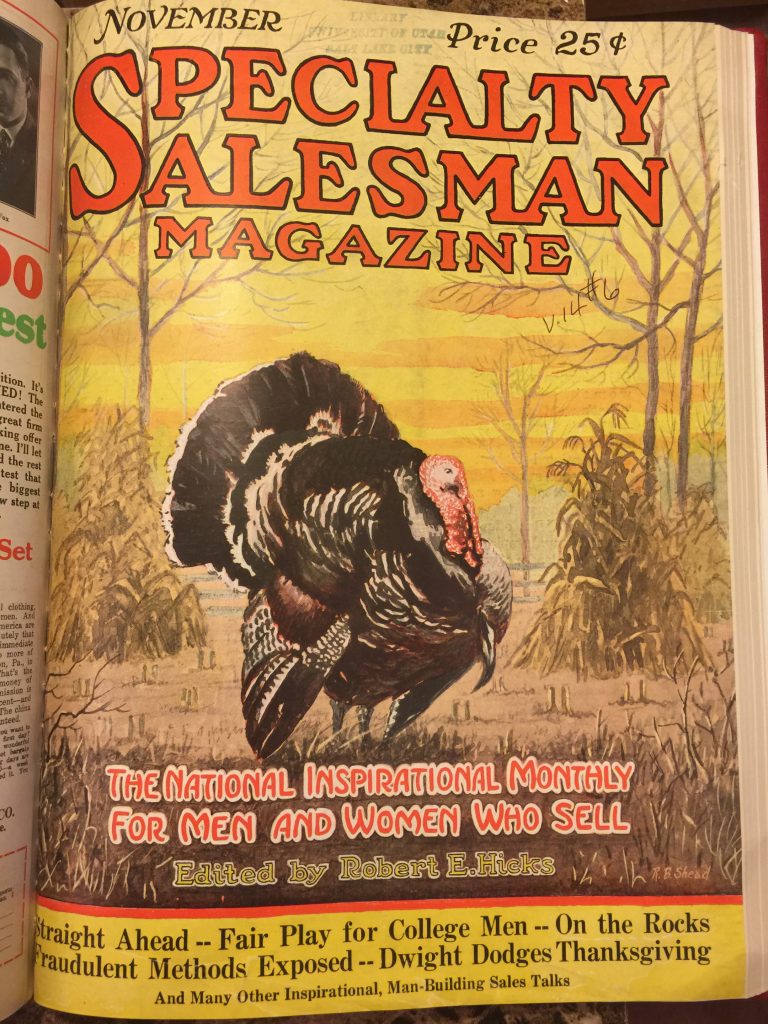
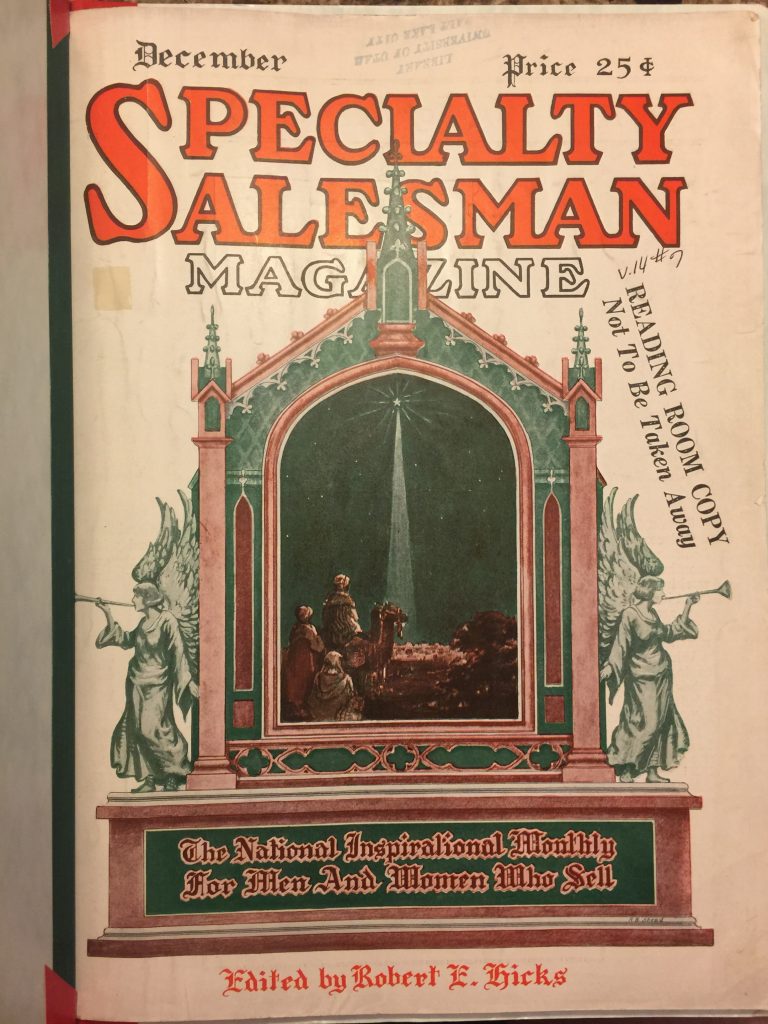

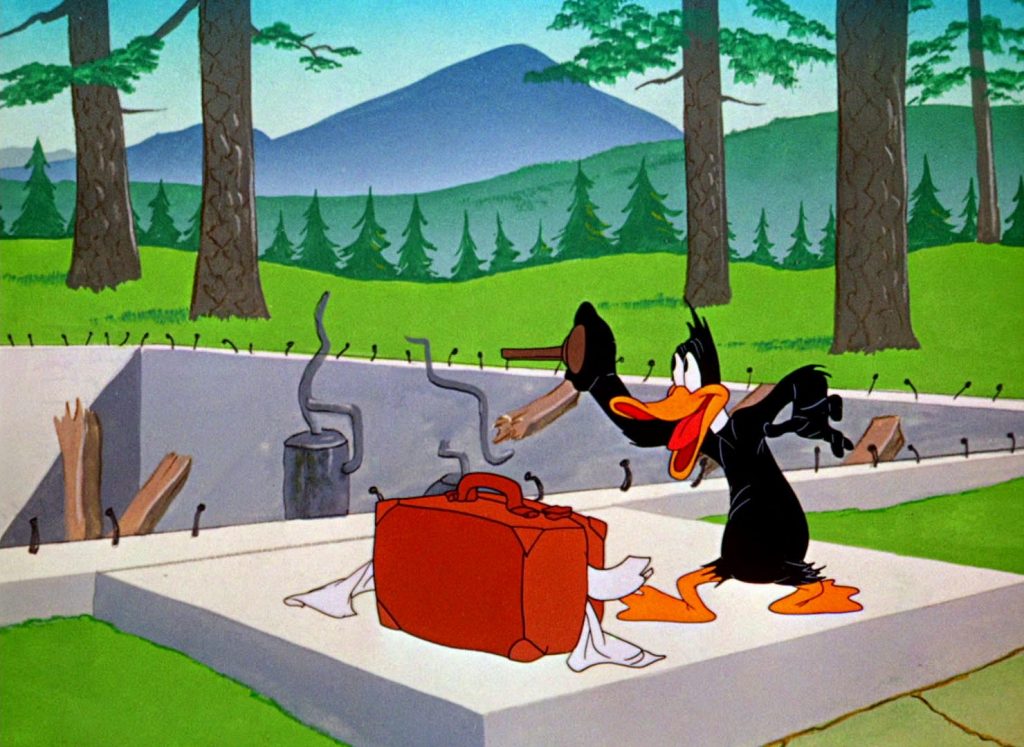
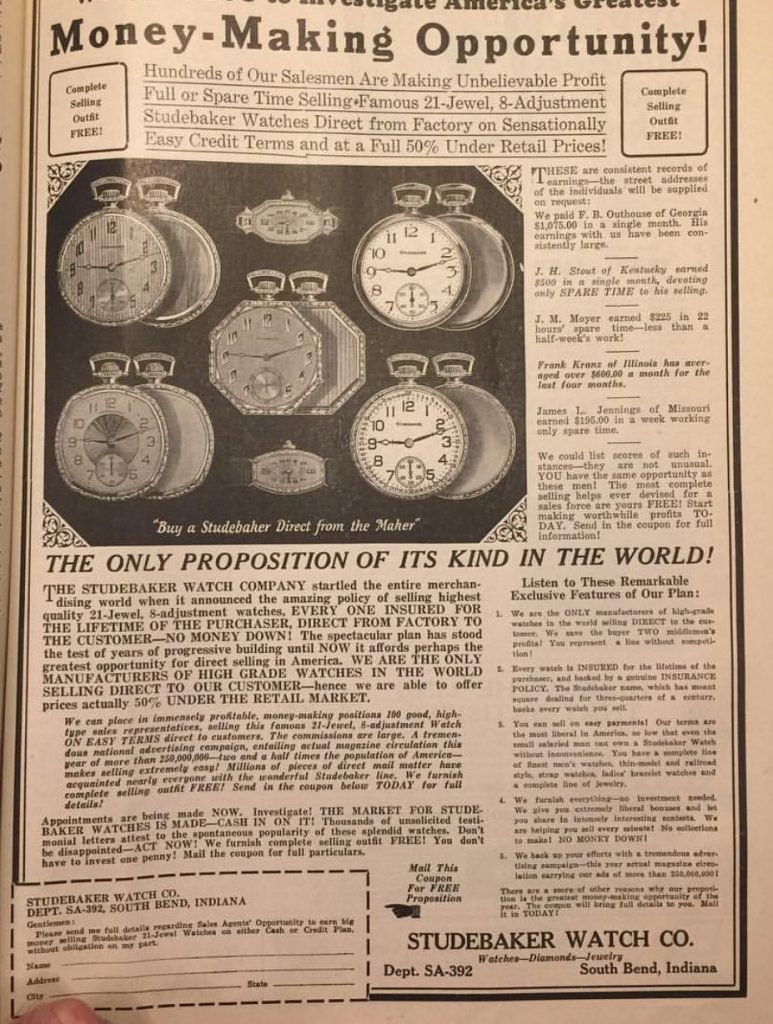
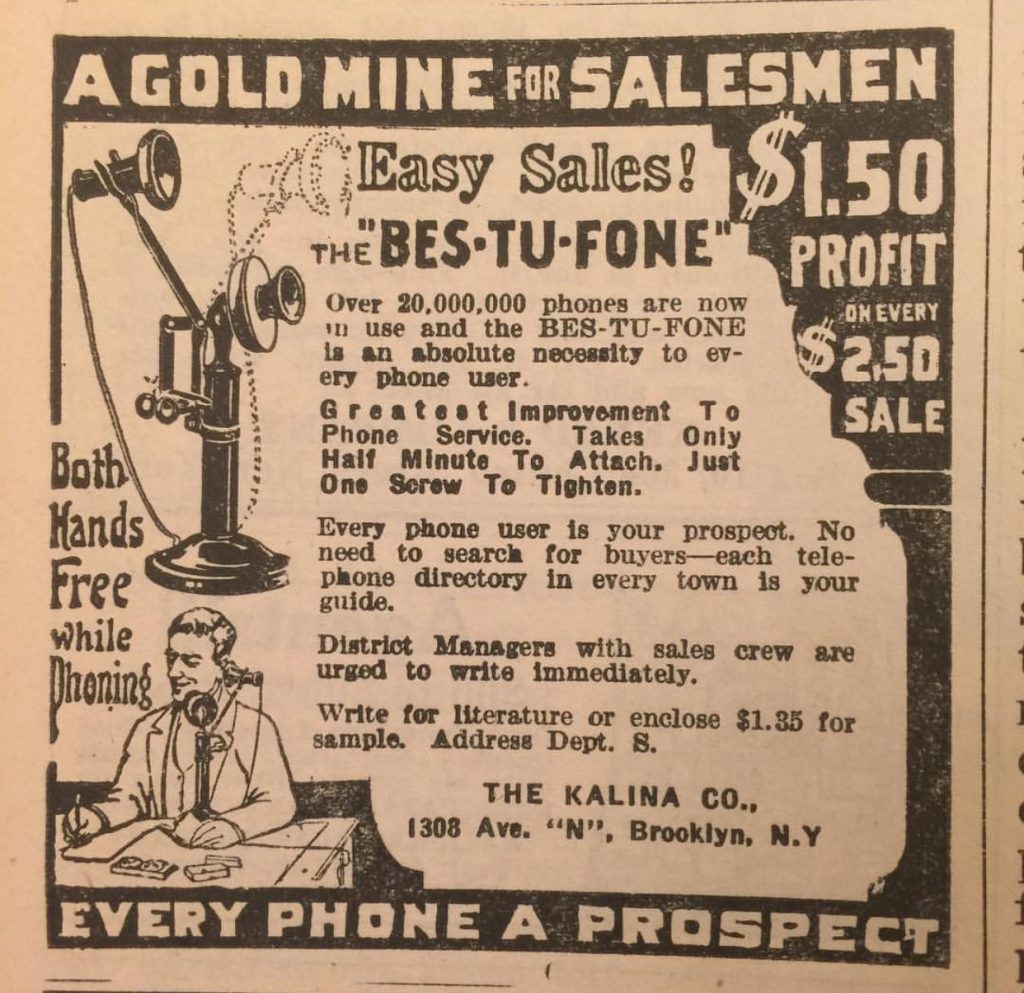
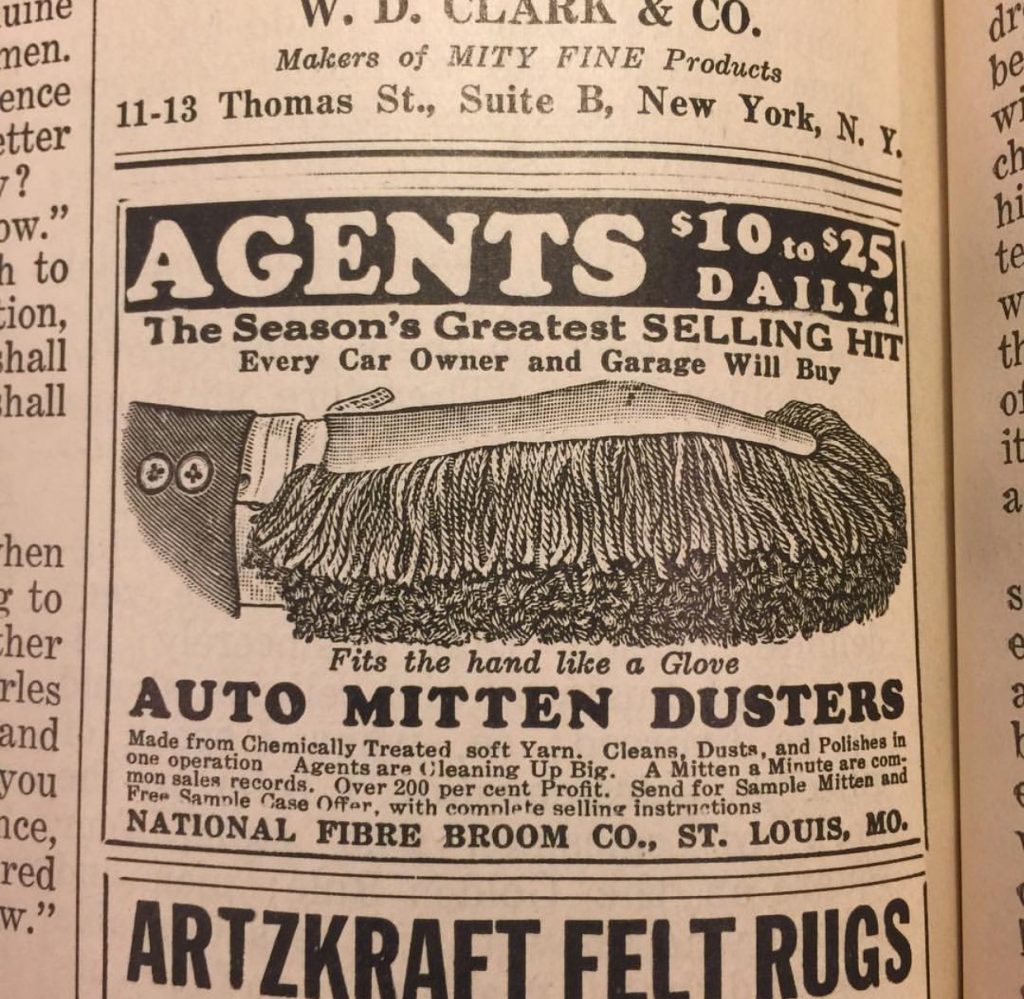
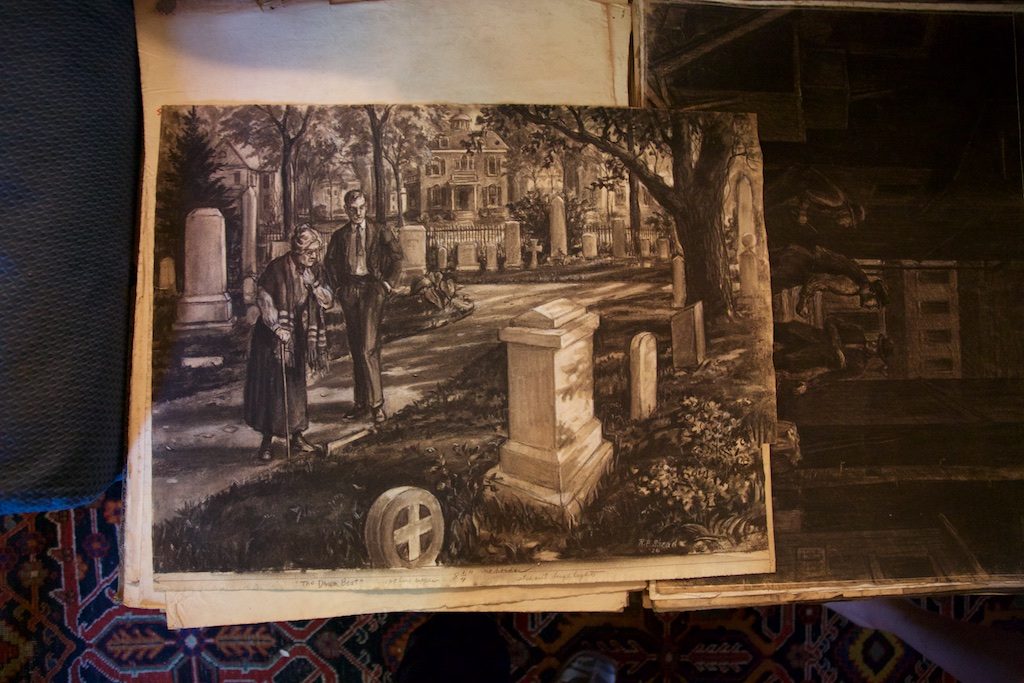
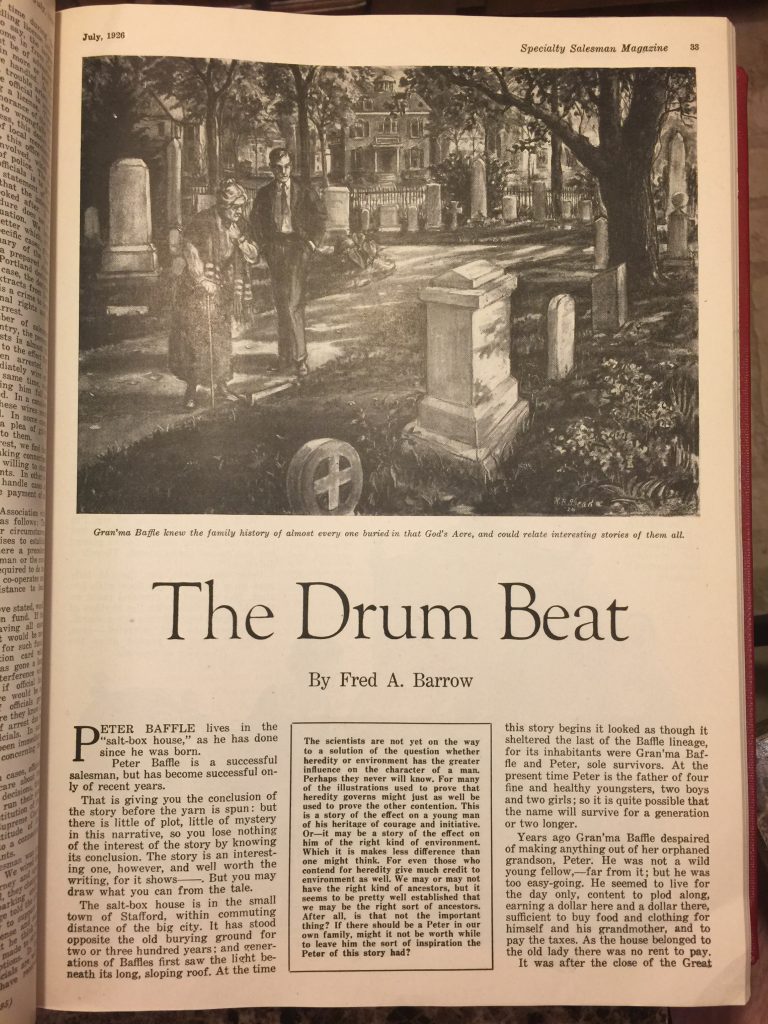
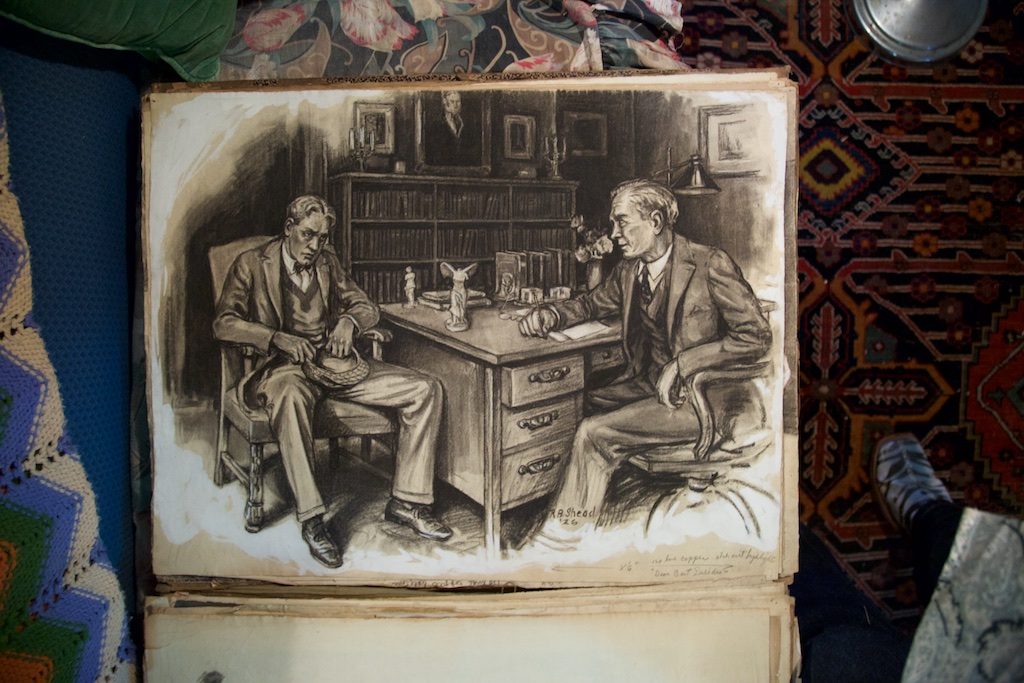

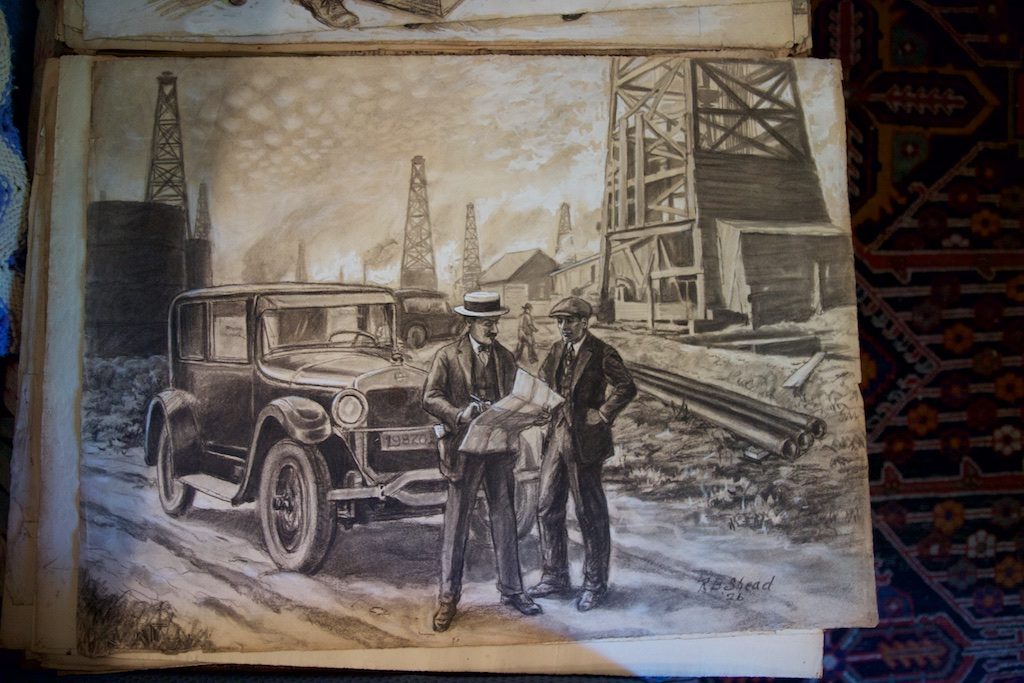
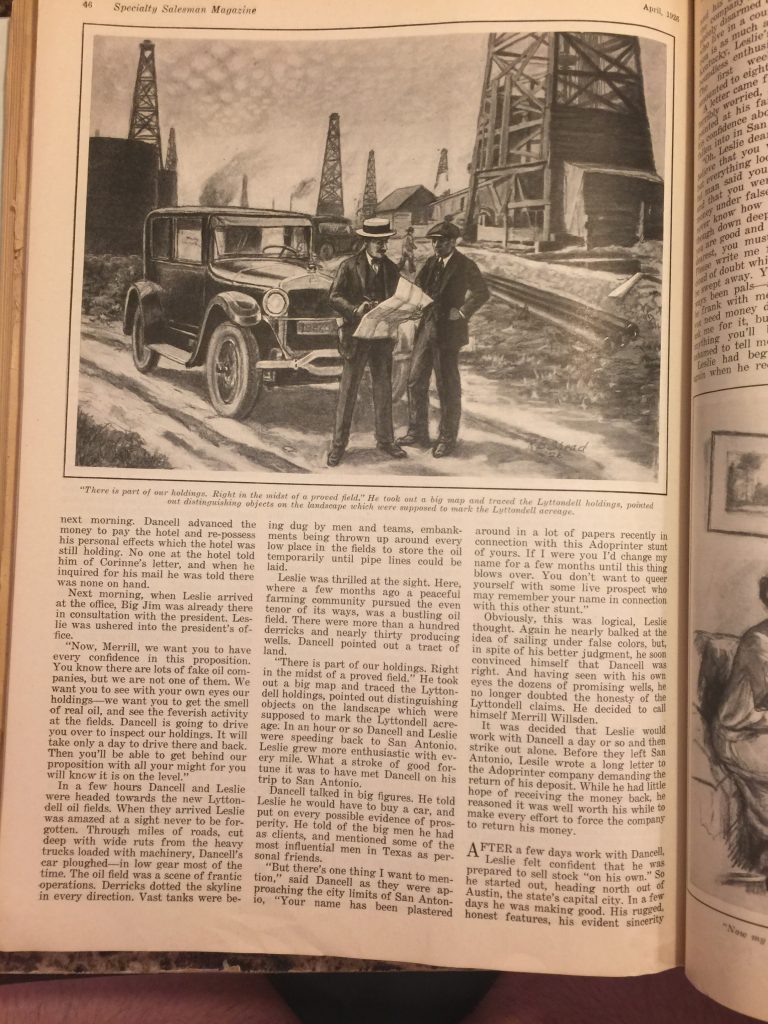
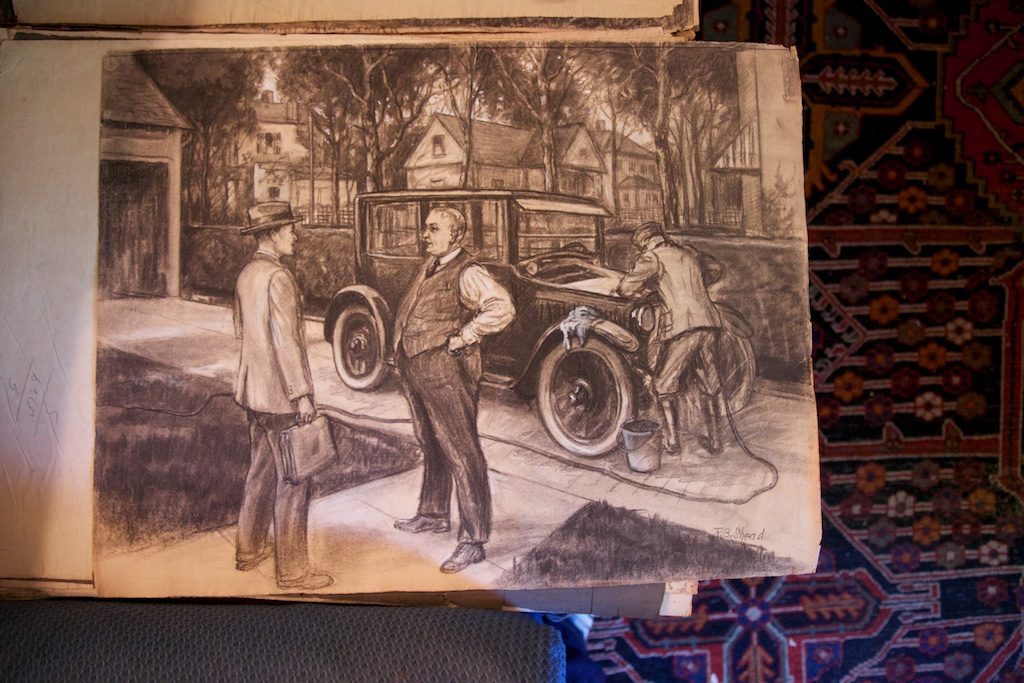
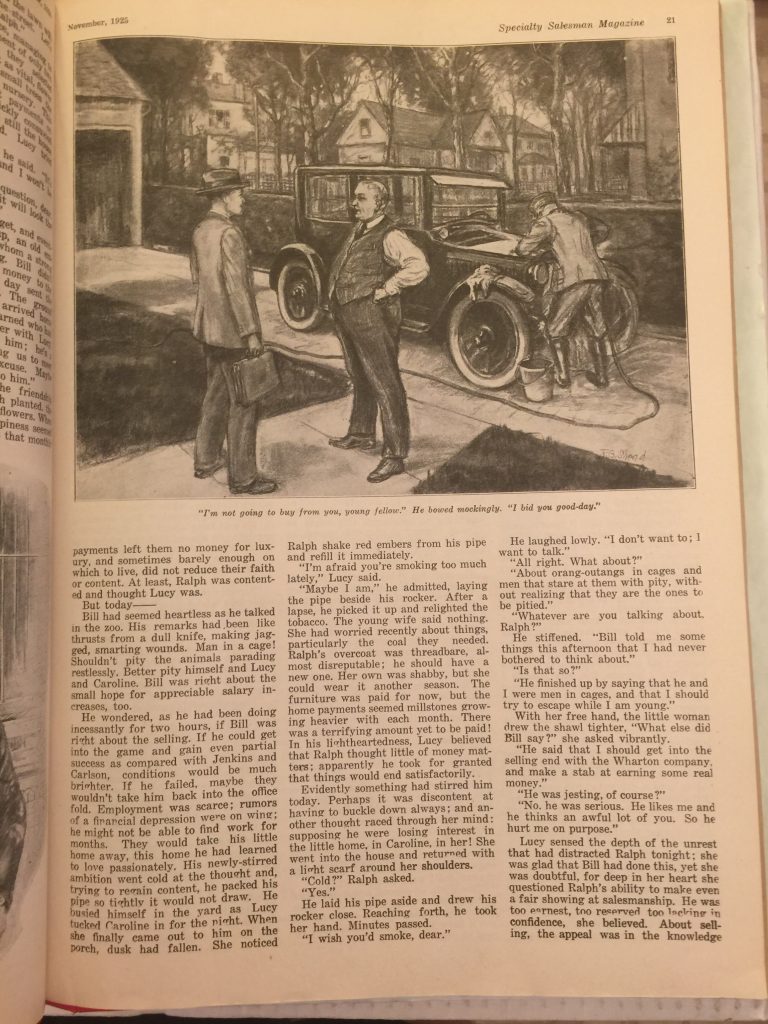

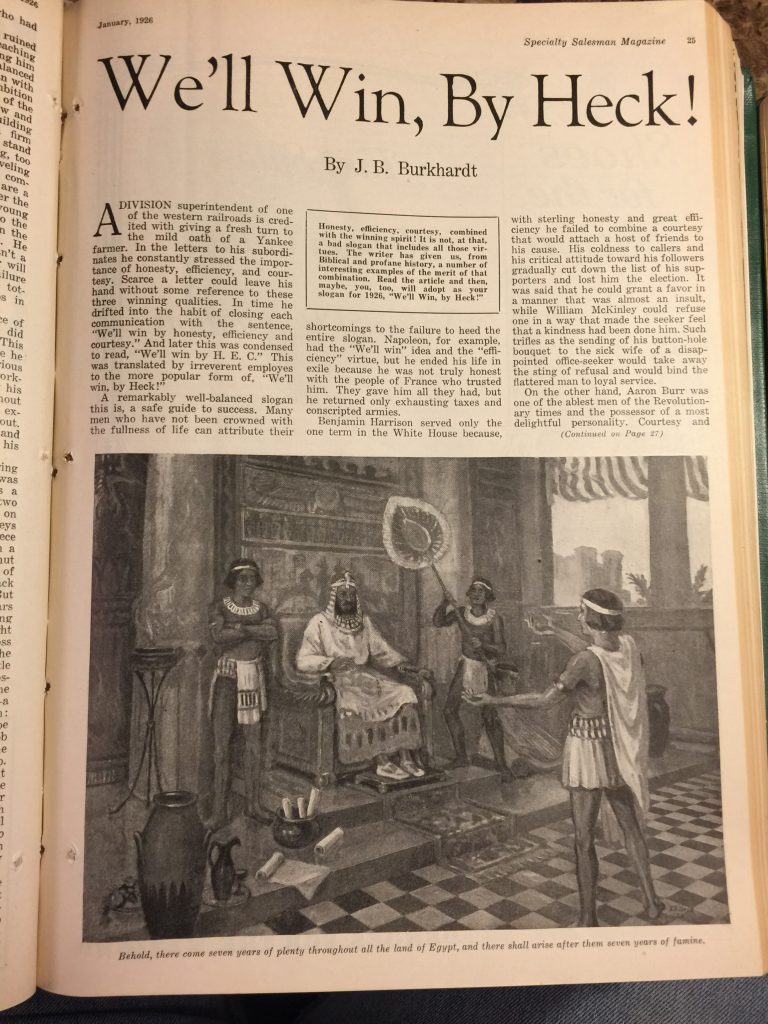
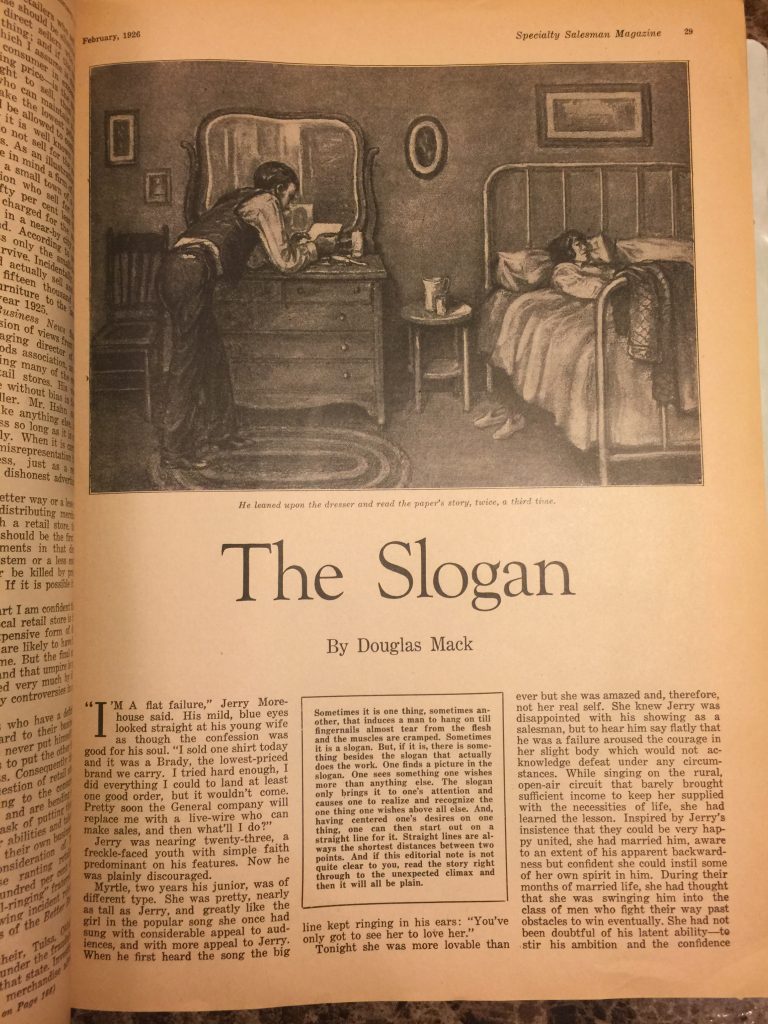
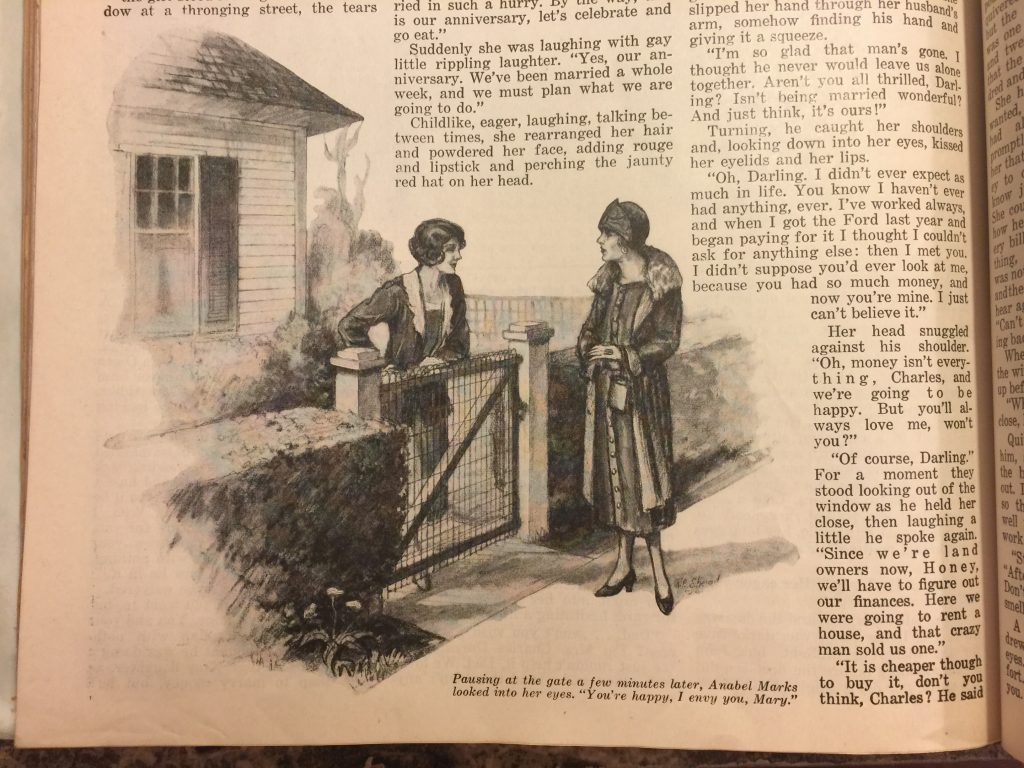
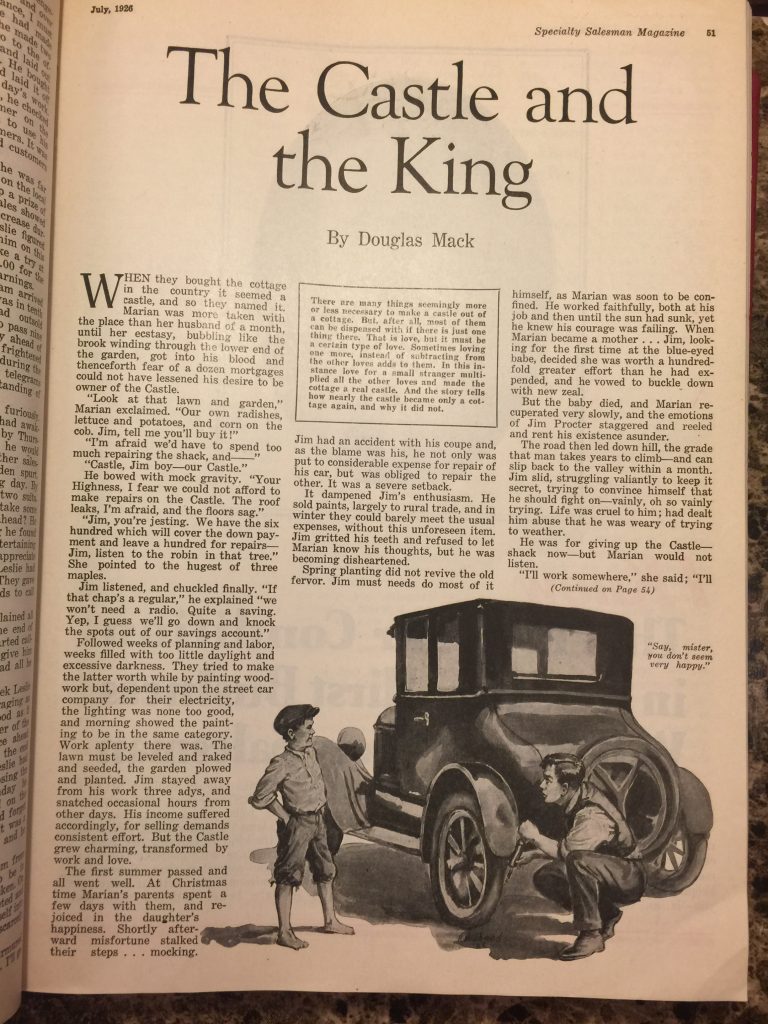
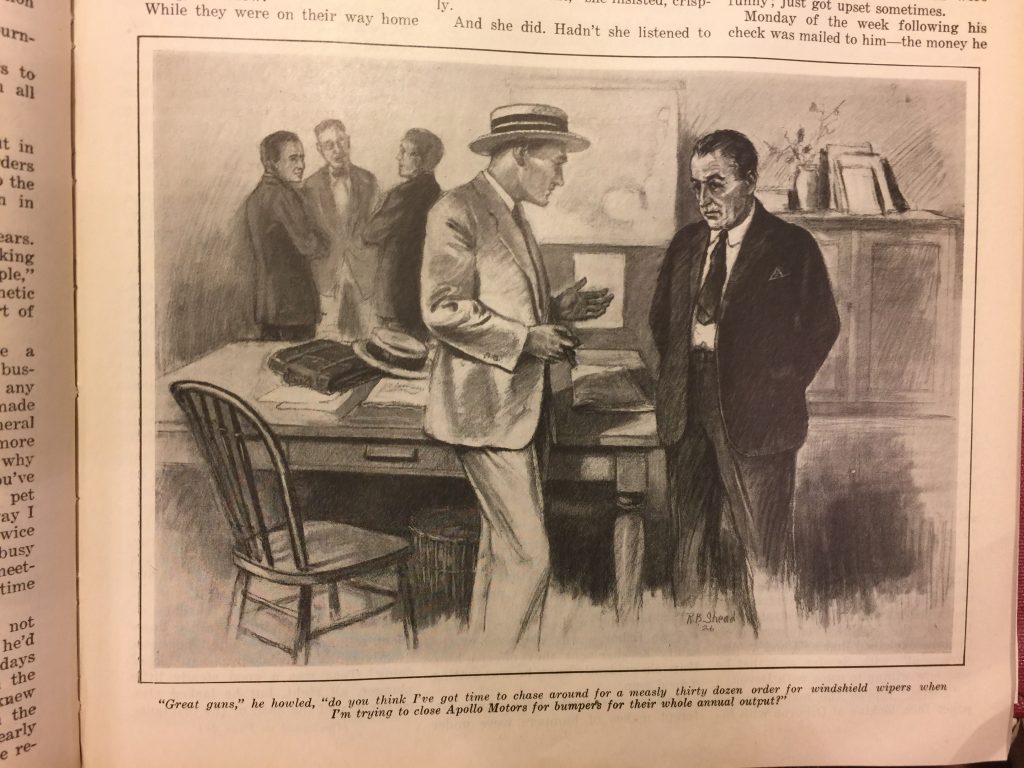
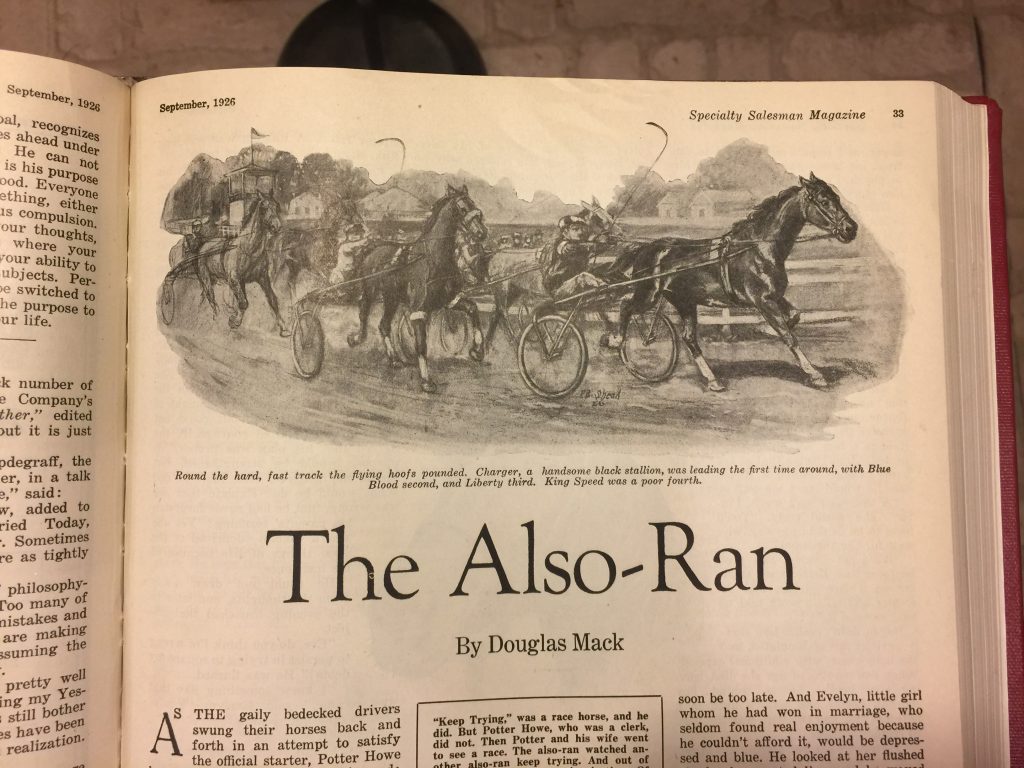
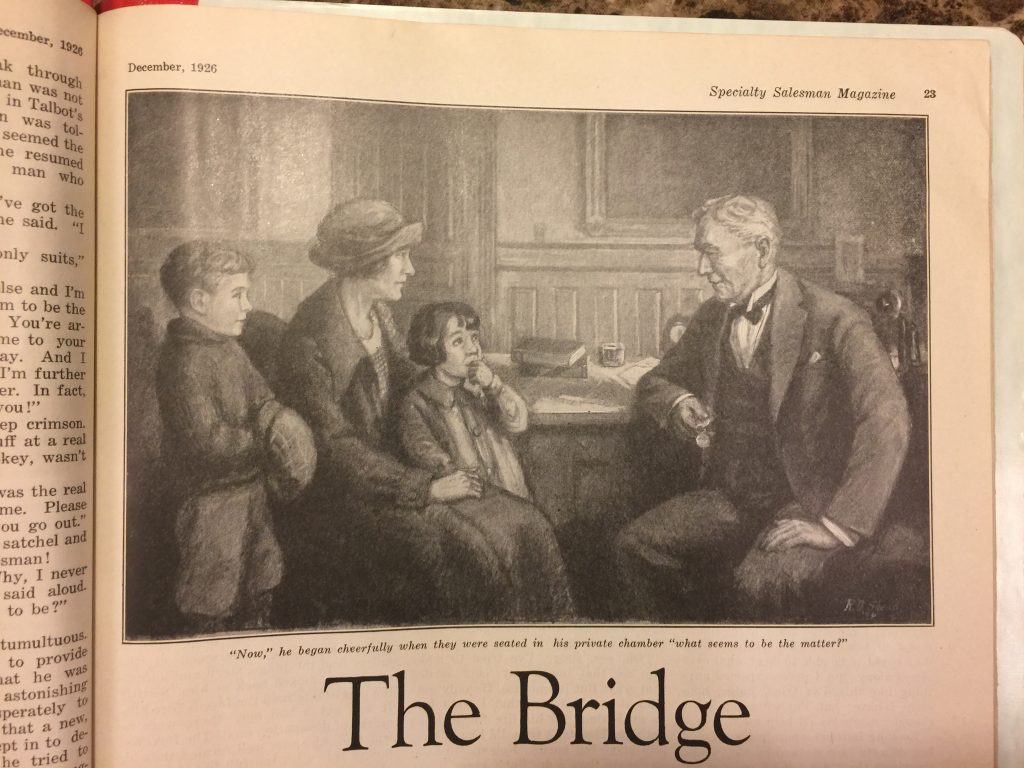
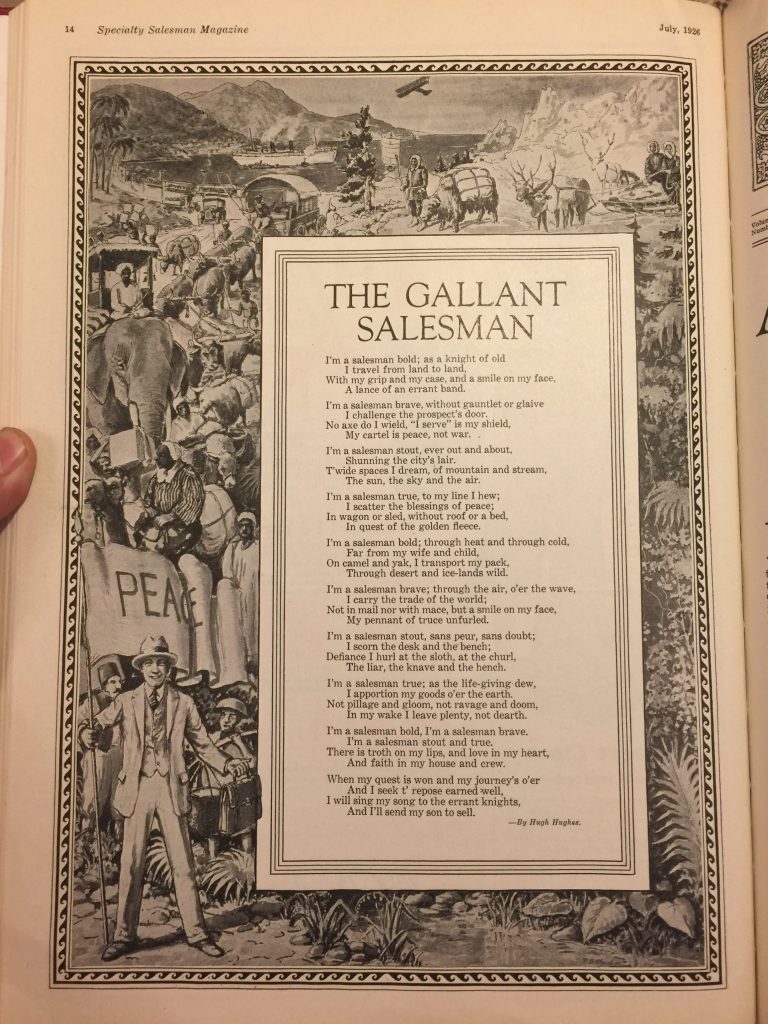
2 thoughts on “R.B. Shead: Art Director”